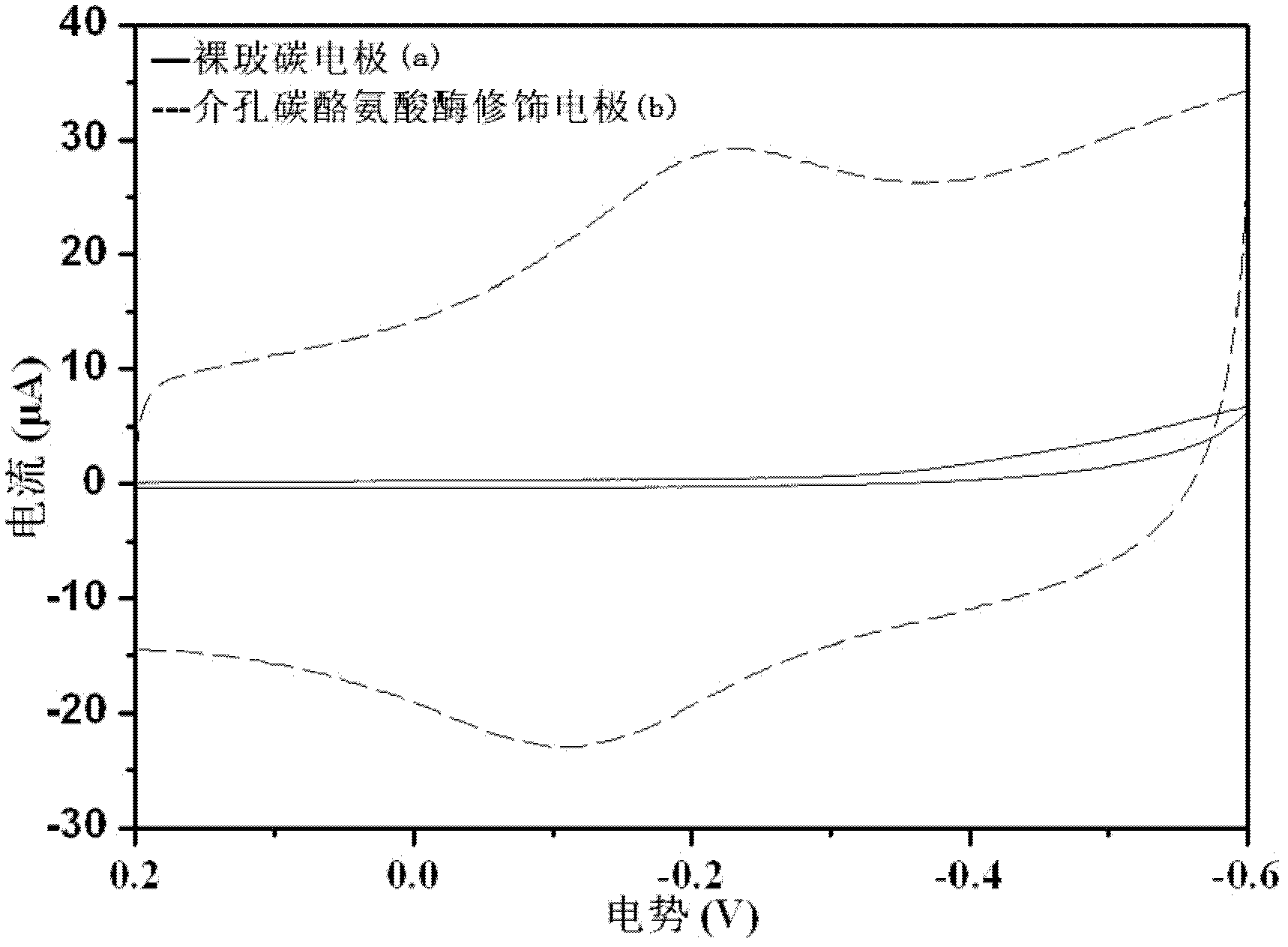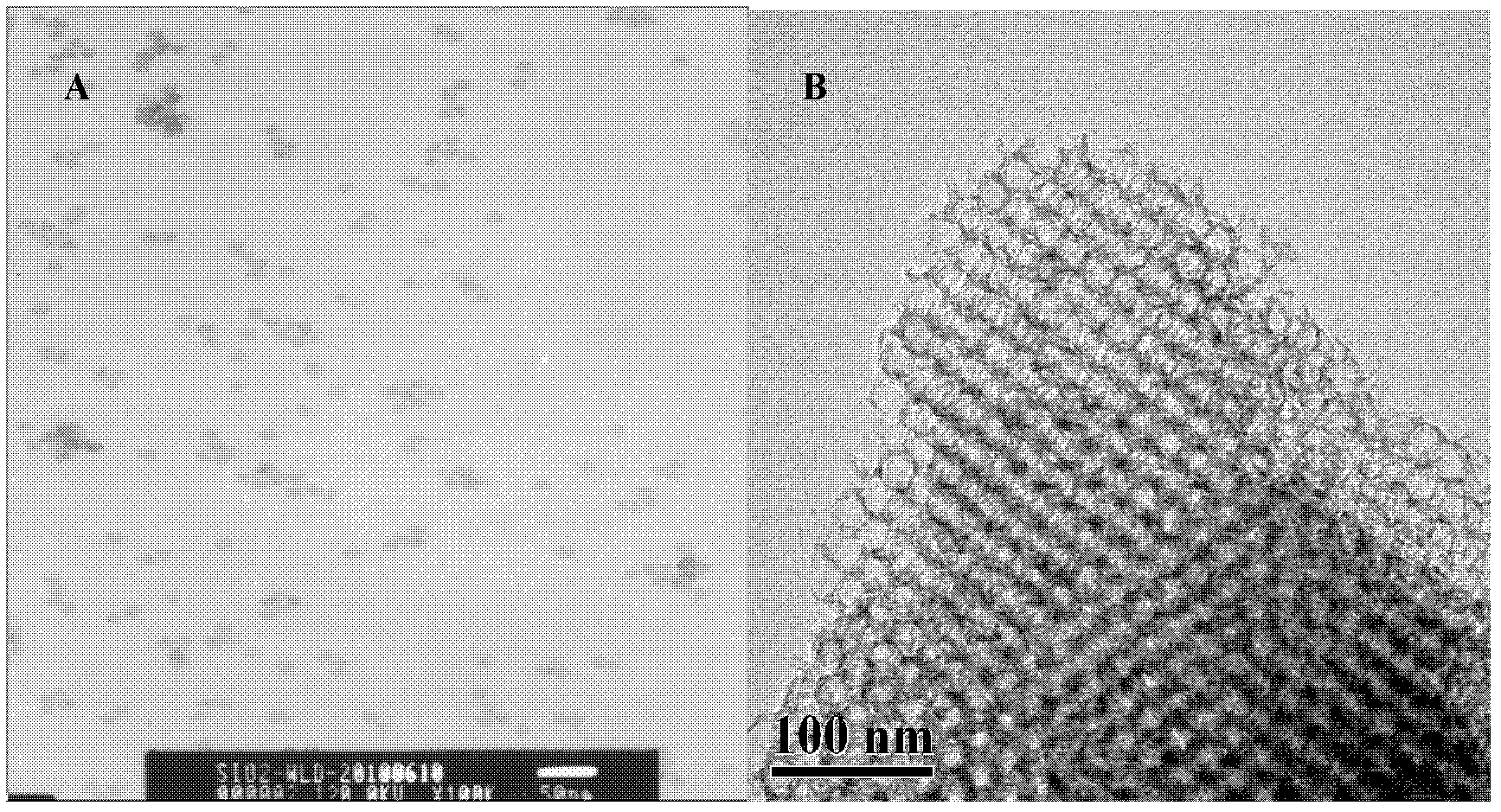Method for detecting phenol compounds in water body environment through enzyme electrochemical biosensor
A phenolic compound, electrochemical technology, applied in the field of biosensing, to achieve the effect of improving response speed and sensitivity, facilitating electrochemical energy conversion, and preventing unfolding and inactivation
- Summary
- Abstract
- Description
- Claims
- Application Information
AI Technical Summary
Problems solved by technology
Method used
Image
Examples
Embodiment 1
[0036] Example 1. Tyrosinase electrochemical biosensor assembly
[0037] Glassy carbon electrode assembly steps:
[0038] 1) A glassy carbon electrode with a diameter of 0.3 cm was polished with Al2O3 powders with particle sizes of 1 μm, 0.3 μm, and 0.05 μm, and then ultrasonically cleaned in deionized water for 3 times, each time for 2 minutes. Put in 2mmol l L -1 The cyclic voltammetry curve was scanned between -0.1-0.6V in the potassium ferricyanide solution. The redox peak potential difference of the curve is less than 75mV, indicating that the potassium ferricyanide reaction on the surface of the glassy carbon electrode is a completely reversible reaction, and there is no impurity on the electrode surface.
[0039] 2) Construction of supramolecular self-assembly of tyrosinase mesoporous carbon materials. Monodisperse silica gel spheres prepared by the sol-gel method were used as hard templates, polystyrene was used as carbon source, and ordered mesoporous carbon with a...
Embodiment 2
[0043] Example 2. Standard solutions for the detection of catechol, phenol and nonylphenol by tyrosinase electrochemical biosensor
[0044] Dissolve catechol, phenol and nonylphenol in acetonitrile solution to make 1mmol L -1 standard solution.
[0045] Use the Shanghai Chenhua Electrochemical Workstation (Chi 440B) to scan the curve of current and time under the condition of -0.1V constant potential, and add to 8mL 50mmol L at intervals of 40s -1 Add 4μL 1mmol L dropwise to the phosphate buffer solution -1 The catechol standard solution was used to obtain the correlation curve between the current signal and time. Put the tyrosinase electrochemical sensor in the blank detection solution (50mmol L -1 The response signal of the scanning record in the phosphate buffer solution) is recorded as I a , the response signal obtained by adding the catechol standard solution into the blank detection solution is recorded as I b ; Taking the catechol concentration (c) as the abscissa,...
Embodiment 3
[0047] Example 3. Detection of Potential Interfering Substances of Tyrosinase Electrochemical Biosensor
[0048] Dissolve the following compounds in acetonitrile to make 100mmol L -1 tyrosinase electrochemical biosensor to record changes in electrical signals; the detection compounds are: tartaric acid, sodium citrate, sodium oxalate, urea, ethyl acetate, diethyl carbonate, and glucose. The detection process of the above compounds is the same as that of catechol.
[0049]Compounds such as ethyl acetate are not specific substrates of tyrosinase, and the change intensity (w) of the generated current signal is less than 0.13 microamperes (three times the signal-to-noise ratio), that is, they are not detected. As the reaction substrate of tyrosinase, catechol and other phenolic compounds cause the change of the electrochemical response signal of the tyrosinase electrochemical biosensor to be much greater than 0.13 microamperes, which is obviously detected; therefore, tyrosinase c...
PUM
| Property | Measurement | Unit |
|---|---|---|
| diameter | aaaaa | aaaaa |
| pore size | aaaaa | aaaaa |
Abstract
Description
Claims
Application Information
 Login to View More
Login to View More - R&D
- Intellectual Property
- Life Sciences
- Materials
- Tech Scout
- Unparalleled Data Quality
- Higher Quality Content
- 60% Fewer Hallucinations
Browse by: Latest US Patents, China's latest patents, Technical Efficacy Thesaurus, Application Domain, Technology Topic, Popular Technical Reports.
© 2025 PatSnap. All rights reserved.Legal|Privacy policy|Modern Slavery Act Transparency Statement|Sitemap|About US| Contact US: help@patsnap.com



